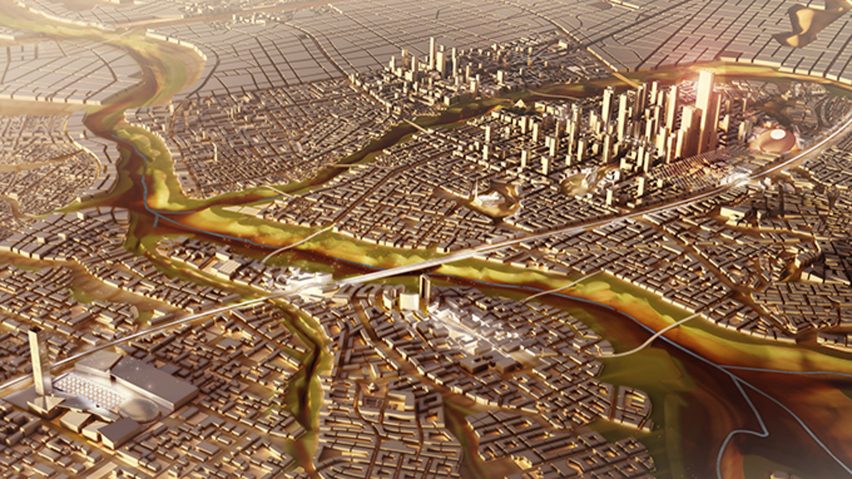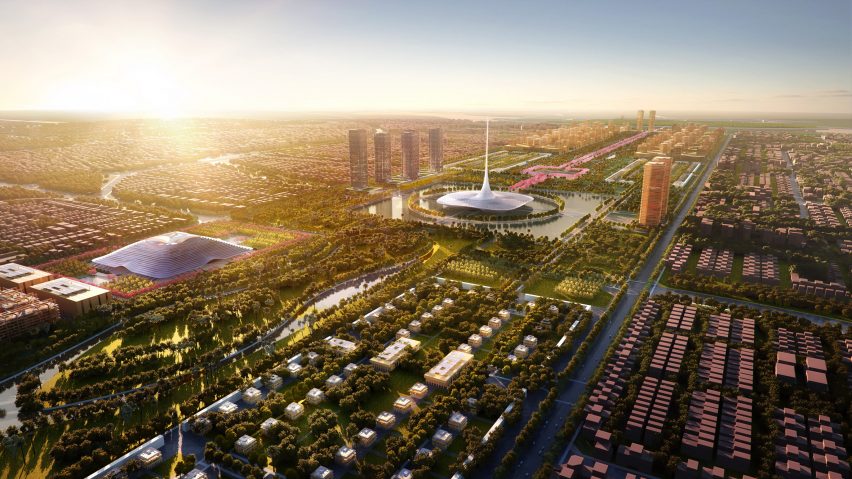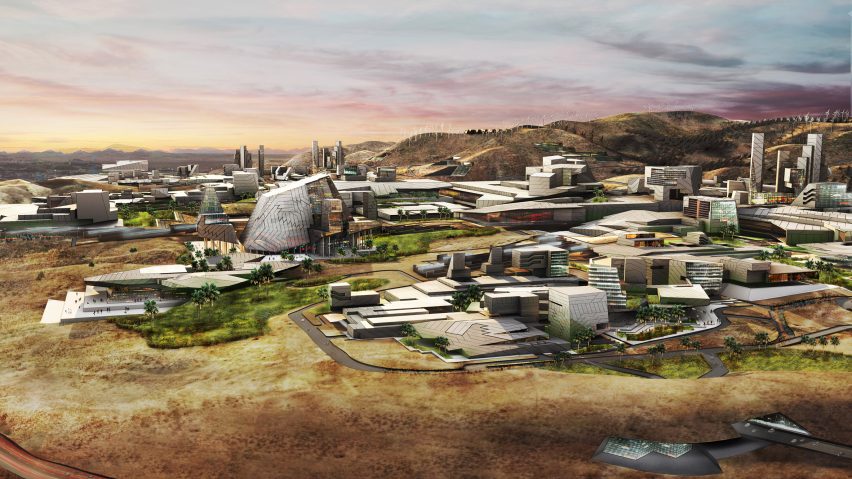Met sleepboten werd in februari een klein blok met daarop vier kleurrijke gebouwen van de haven in hoofdstad Male naar een plek op het water gesleept. Het is het eerste bouwblok van iets wat uiteindelijk een compleet eiland met winkels, woningen en scholen moet worden.
Zelfvoorzienende stad
“Verschillende wooneilandjes zijn verbonden via bruggen. Als je op het drijvende eiland woont, merk je eigenlijk niet dat het drijft. Er zijn zelfs zandwegen, zandstranden en bomen die in grote potten staan”, zegt architect Koen Olthuis van WaterstudioNL.
De stad komt in een lagune te liggen, met daaromheen op de ondiepe lagunerand kleine eilanden, die als golfbrekers fungeren en waar onder meer energievoorzieningen staan.
“De stad is zelfvoorzienend, met zonnepanelen. Van een paar kilometer verderop halen we op 700 meter diepte koud water uit de zee, dat gebruiken we voor koeling van de panden. Verder kunnen we de zeewind gebruiken voor ventilatie.”
Olthuis houdt zich al twintig jaar bezig met drijvende woningen. In 2007 stond hij op plek 122 in de lijst met meest invloedrijke personen van Time Magazine. In Nederland vind je verschillende drijvende woningen van zijn hand, onder meer in Dordrecht, Zeewolde en in Amsterdam.
Waterstudio kreeg de opdracht om een drijvende stad in de Malediven te ontwerpen van de eveneens Nederlandse projectontwikkelaar Dutch Docklands.
Fundering van piepschuim en beton
Olthuis: “Drijvende woningen bouwen is eigenlijk niet moeilijk. De fundering bestaat uit een enorm blok van piepschuim en beton. Dat blok is 2,5 meter dik en daar zitten zaken als elektra en riolering in weggewerkt.”
Onder een aantal pleintjes waar drie straten bij elkaar komen, zitten afmeerpalen die zorgen dat de stad niet wegdrijft.
Zo komt de drijvende stad er straks uit te zien als het klaar is.
Klimaatopwarming funest
De Malediven bestaat uit bijna 1200 eilandjes. Die zijn zo plat dat ze hooguit een meter boven de zeespiegel uitkomen. Klimaatwetenschappers vrezen dat aan het einde van de 21e eeuw het land verdwenen is, zonder ingrijpen.
Nu de Wereld Meteorologische Organisatie (WMO) gisteren bekend maakte dat de kans stijgt dat de aarde meer dan 1,5 graad opwarmt, is het alle hens aan dek. Het land vreest de klimaatverandering. Op de 26e VN-klimaatconferentie in 2021 zei de Malediviaanse president Ibrahim Mohammed Solih: “Het verschil tussen anderhalve graad Celsius en twee graden Celsius betekent een doodvonnis voor de Malediven.”
De Malediven bestaat grotendeels uit beschermd natuurgebied. Dat zorgde voor vertraging van het bouwproject, legt Olthuis uit. “We moesten aantonen dat we geen schade aanrichten. Zo’n project is ook compleet nieuw voor de lokale overheid.”
Kunstmatig opgespoten eiland
Diezelfde lokale overheid gaf rond de eeuwwisseling uit angst voor klimaatopwarming wel opdracht voor de bouw van het kunstmatige eiland Hulhumale, gecreëerd door miljoenen kubieke meters zand op te spuiten. Op het eiland ligt een internationaal vliegveld en inmiddels wonen er 92.000 mensen.
Olthuis: “Bij het opspuiten van zo’n eiland, creëer je veel meer schade. Je moet bijna 15 meter zand opspuiten om boven het water uit te komen. Bovendien is Hulhumale eigenlijk te laag opgespoten. Het is niet veel hoger dan de andere eilanden. Als de zeespiegel twee meter stijgt is het weer weg. Bij een drijvend eiland maakt het niet uit hoeveel het water stijgt. Het eiland stijgt gewoon mee. Zelfs een tsunami zou geen invloed moeten hebben.”
Vanaf 250.000 dollar
Op het drijvende eiland staan huurwoningen en koopwoningen, waarbij de prijs bij 250.000 dollar start. Over de bouwkosten kan Olthuis niets zeggen. “‘Maar de totale ontwikkelkosten zijn vergelijkbaar met ontwikkelkosten op land. Voor bouwen op water heb je duurdere drijvende funderingen nodig, maar bouwgrond op land kost meer. Het heft elkaar op.”
Olthuis verwacht dat er veel animo is om in de drijvende stad te gaan wonen. “In Male is eigenlijk geen plek meer. Hele gezinnen wonen daar in één kamer. En de bevolking van de Malediven groeit ook, zo keren er veel Maldivianen terug uit het naburige Sri Lanka.”
Project VN
Het idee van drijvende steden is niet nieuw. De Azteekse stad Tenochtitlan dreef al. Via een programma van de Verenigde Naties (VN) wordt aan een drijvende stad bij Zuid-Korea gewerkt. De drijvende stad is 75 hectare groot en biedt plaats aan 12.000 inwoners. De stad moet rond 2025 klaar zijn.
Oplossing voor Nederland
Van New York tot Shanghai, wereldwijd kampen steden kampen met dezelfde problemen. Overbevolking en angst voor overstromingen. Drijvende woningen zijn het antwoord op waterspiegelveranderingen, meent Olthuis.
Als het aan hem ligt, komen er in Nederland ook meer drijvende woningen. “We hebben nu een paar honderd drijvende woningen in ons land gebouwd. De markt is nog klein. Dat terwijl er weinig ruimte meer is om op land te bouwen en we ook hier last hebben van de stijging van de zeespiegel.”
‘Drijvende stad op het IJmeer’
Minister De Jonge wil vanaf 2024 100.000 woningen per jaar bouwen om de woningnood te bestrijden, zo staat in plannen die in maart 2022 gepresenteerd zijn. Maar zeker de Randstad is al bomvol.
Olthuis: “Waarom zou je geen drijvende wijk of stad bij het IJmeer tussen Amsterdam en Almere bouwen. Daar is genoeg plek en we hebben de technische kennis. De politiek moet vooruitstrevender denken. En zo’n drijvende stad kun je ook weer afbreken en naar een andere locatie slepen als het moet.”
click here for source website
Click here for the maldives project
















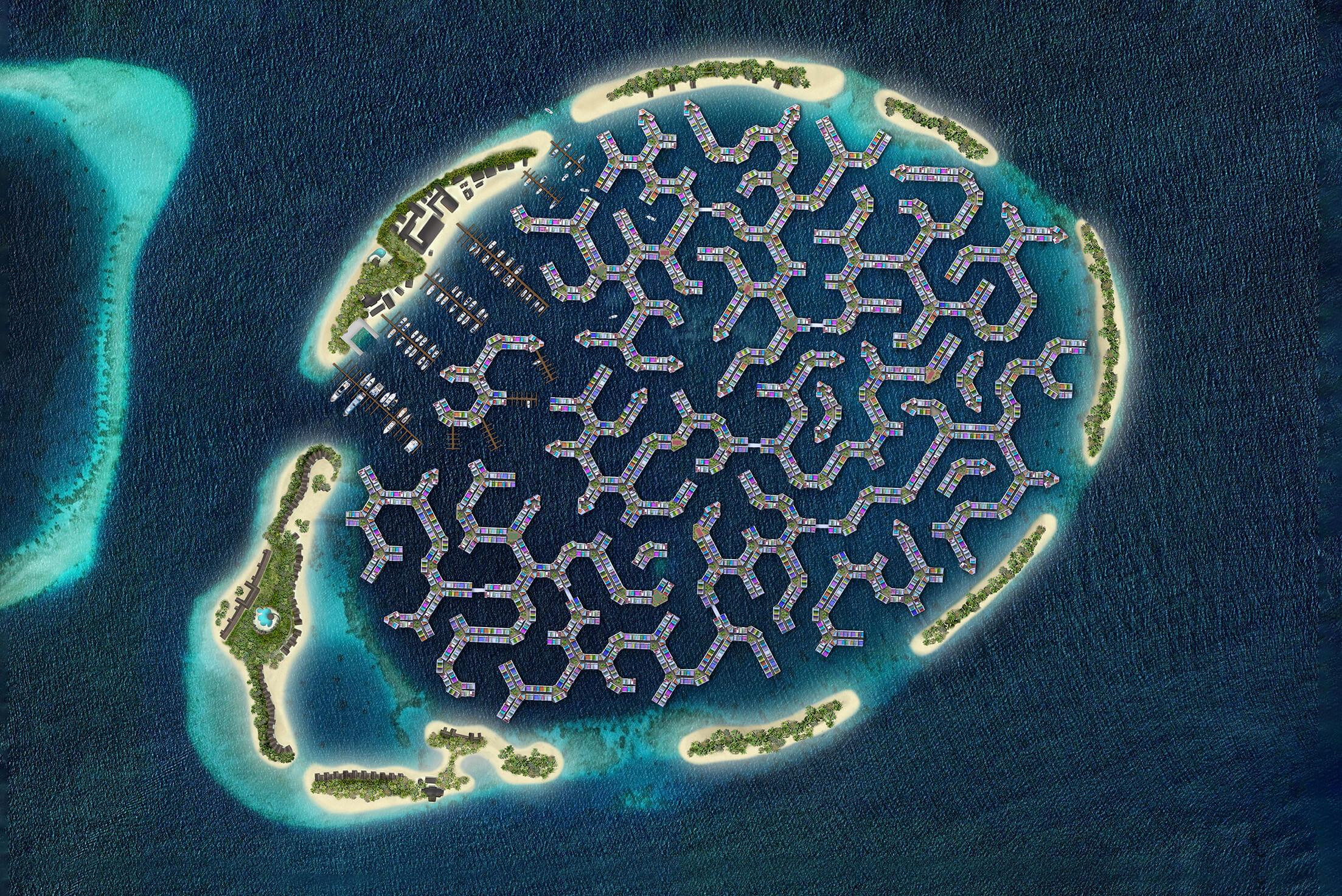
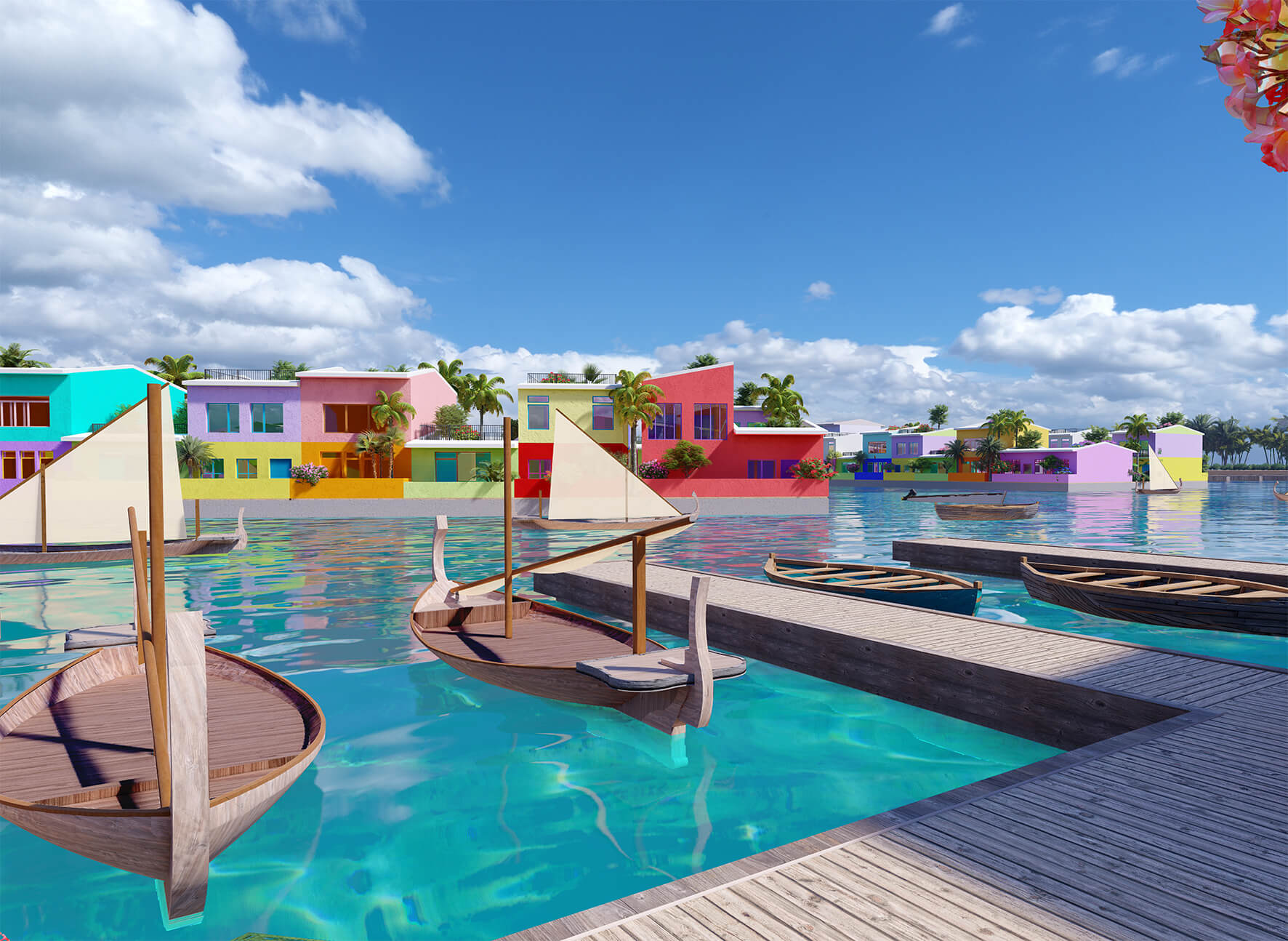





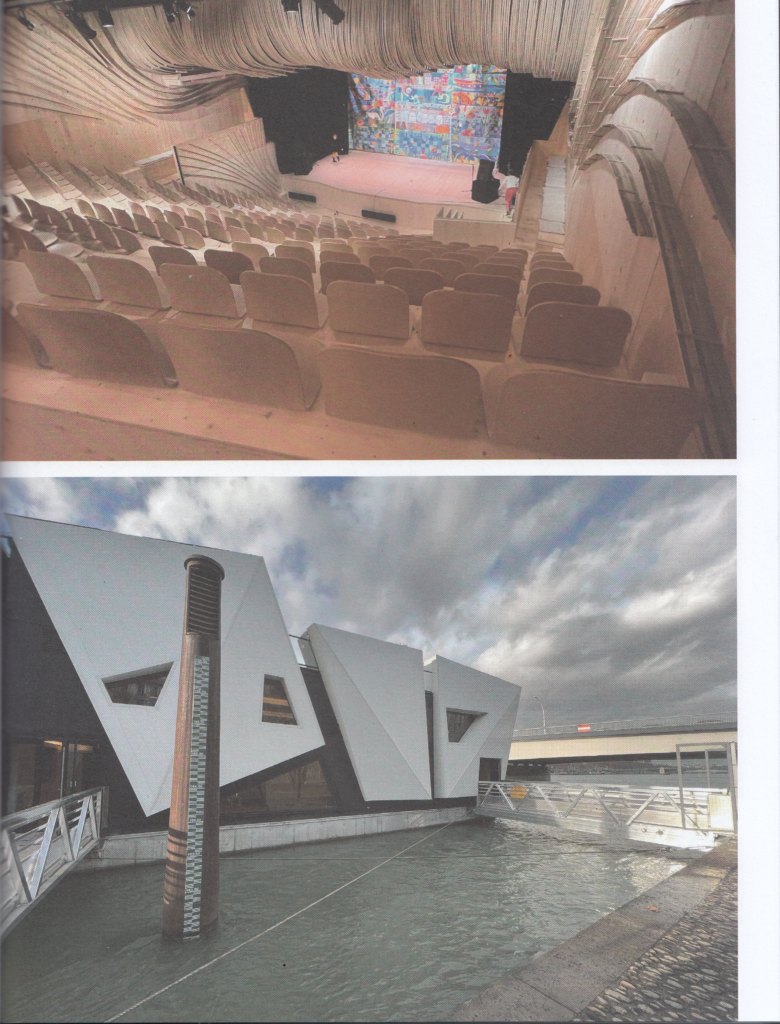

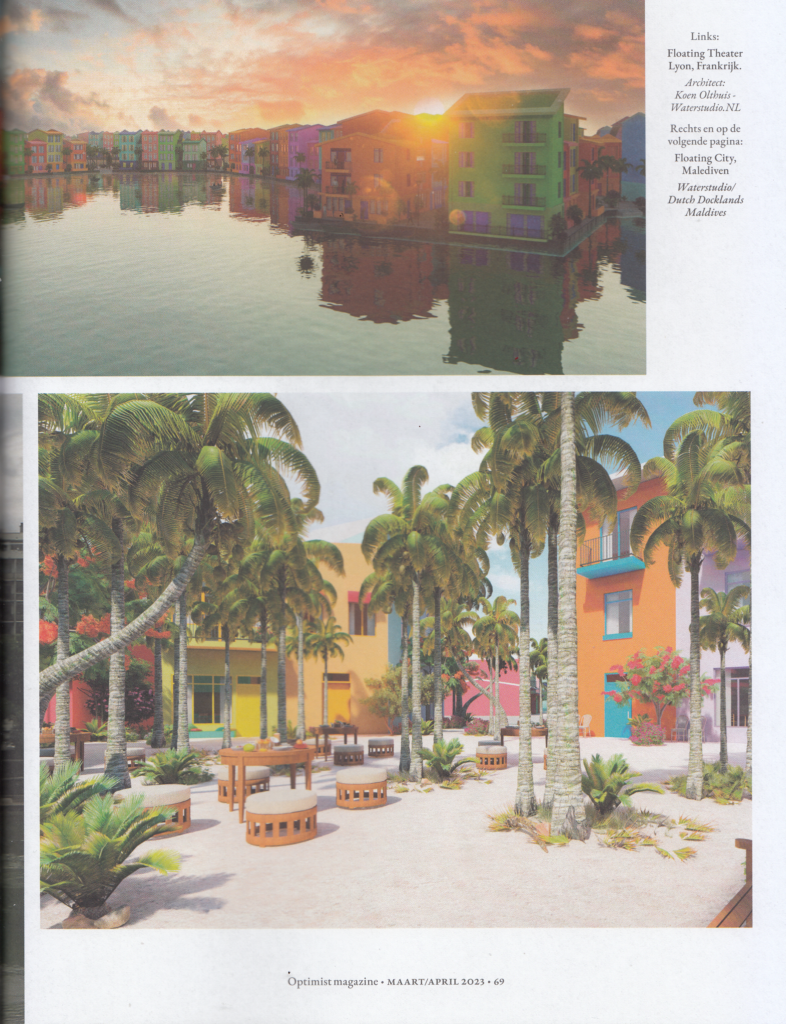

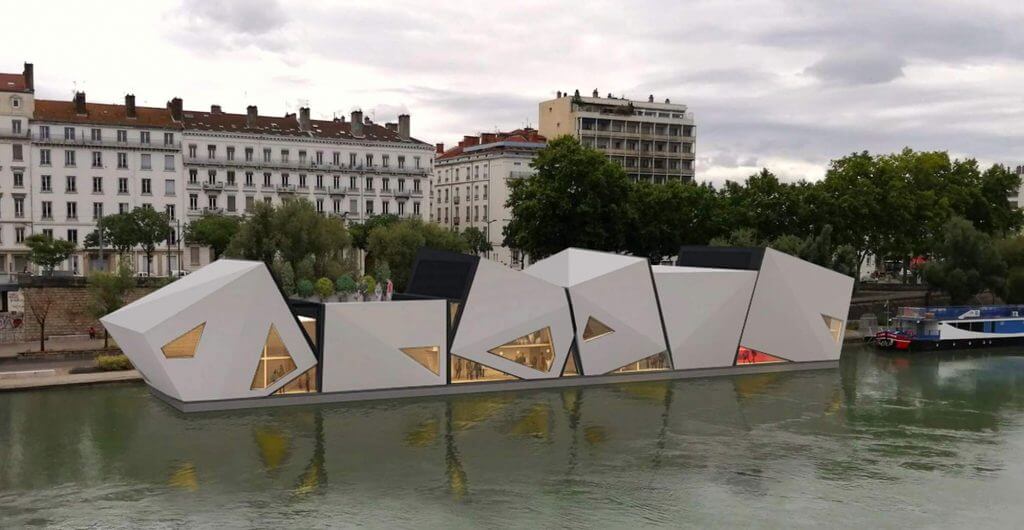
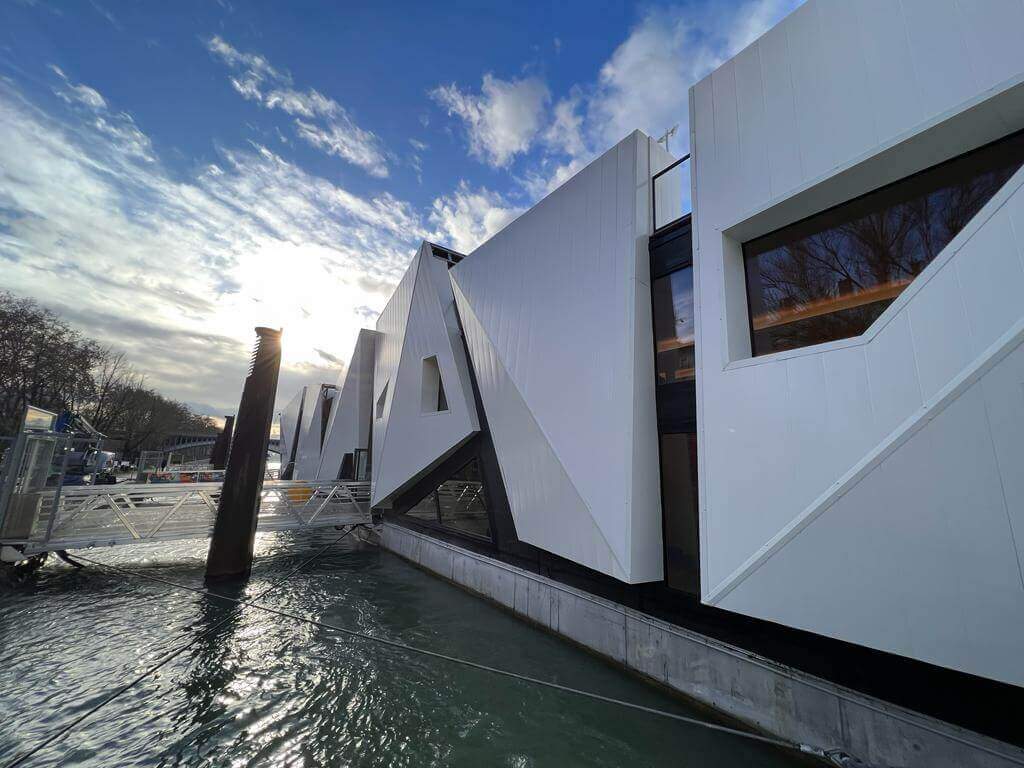




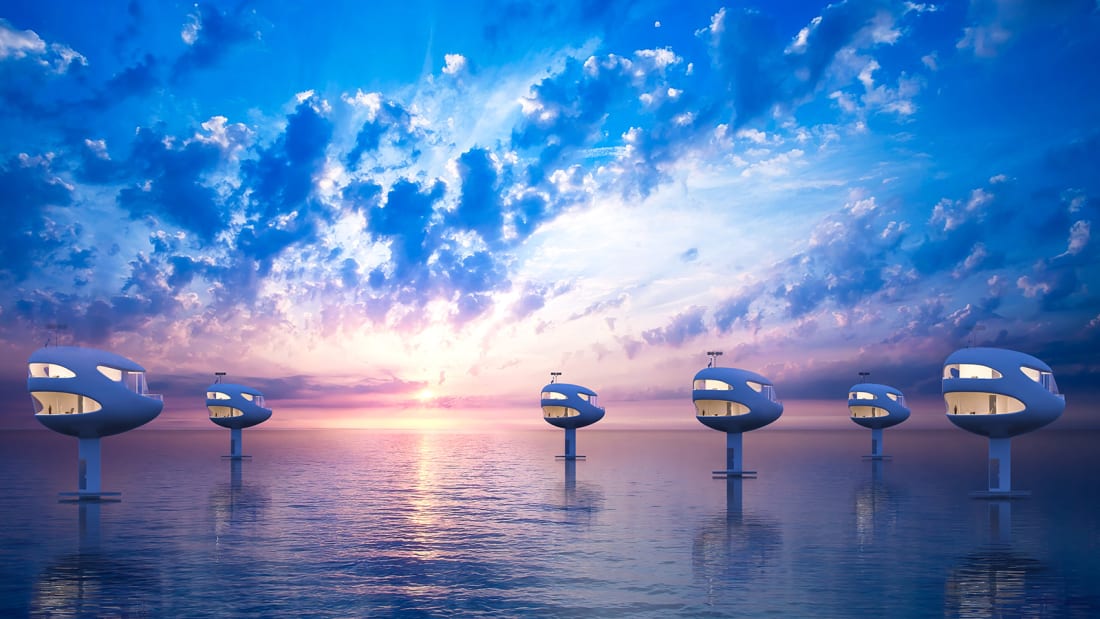
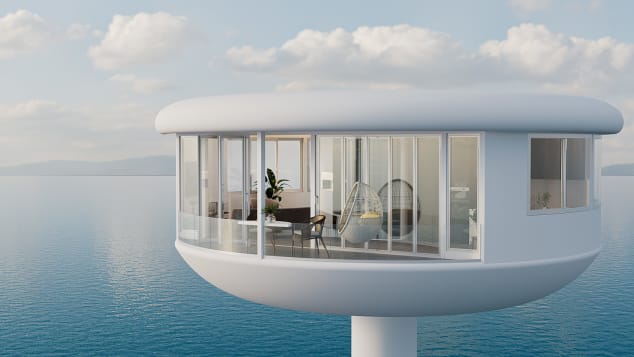

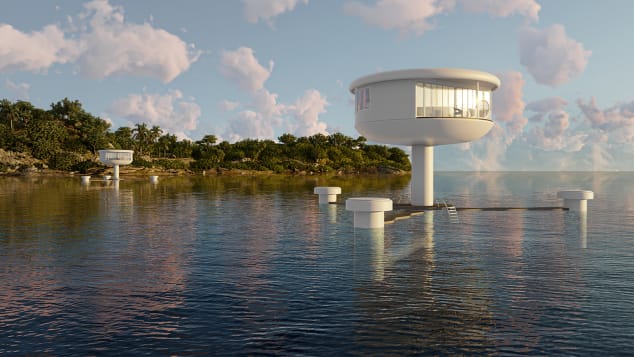




/nouveau.nl/s3fs-public/wysiwyg_images/nouveau-ocean-builders-sea-pod-01.jpg?itok=ATuRsYLZ)
/nouveau.nl/s3fs-public/wysiwyg_images/nouveau-ocean-builders-sea-pod-05.jpg?itok=_p1-fBG3)
/nouveau.nl/s3fs-public/wysiwyg_images/nouveau-ocean-builders-sea-pod-11.jpg?itok=hYnbMzv6)
/nouveau.nl/s3fs-public/wysiwyg_images/nouveau-ocean-builders-sea-pod-09.jpeg?itok=tFF-wa0c)
/nouveau.nl/s3fs-public/wysiwyg_images/nouveau-ocean-builders-sea-pod-07.jpg?itok=7EeNG8ZM)
/nouveau.nl/s3fs-public/wysiwyg_images/nouveau-ocean-builders-sea-pod-013.jpg?itok=WGqyvt4Q)
/nouveau.nl/s3fs-public/wysiwyg_images/nouveau-ocean-builders-sea-pod-14.jpg?itok=oBs_pngD)
/nouveau.nl/s3fs-public/wysiwyg_images/nouveau-ocean-builders-sea-pod-10.jpg?itok=UO2eQXkb)
/nouveau.nl/s3fs-public/wysiwyg_images/nouveau-ocean-builders-sea-pod-12.jpeg?itok=8r063_gP)
/nouveau.nl/s3fs-public/wysiwyg_images/nouveau-ocean-builders-sea-pod-13.png?itok=5EyIgb70)
/nouveau.nl/s3fs-public/wysiwyg_images/nouveau-ocean-builders-sea-pod-02.jpg?itok=CQVy6Djl)





:quality(70)/cloudfront-eu-central-1.images.arcpublishing.com/thenational/SUUS3GUP7RGN7HLZQWHC4SBRCM.jpg)
:quality(70)/cloudfront-eu-central-1.images.arcpublishing.com/thenational/XEZURS55LNALTHMKE2R7PT2ZLA.jpg)
:quality(70)/cloudfront-eu-central-1.images.arcpublishing.com/thenational/SAEC42OEGFCSFGC7II35ZYJQAE.jpg)
:quality(70)/cloudfront-eu-central-1.images.arcpublishing.com/thenational/5UWYJNB5LJFBPLSGIZ2V72FLOE.jpg)
:quality(70)/cloudfront-eu-central-1.images.arcpublishing.com/thenational/HHCCCXL64RHEDCQC7FLCOP3YV4.jpg)
:quality(70)/cloudfront-eu-central-1.images.arcpublishing.com/thenational/D55AUUZXJXKPG53RCORZLRDROA.jpg)
:quality(70)/cloudfront-eu-central-1.images.arcpublishing.com/thenational/DR3DFXEWCBE73LB3PNJSHC4WFM.webp)
:quality(70)/cloudfront-eu-central-1.images.arcpublishing.com/thenational/IYYB2WDAPVGZBOX7DT4X22P3Q4.jpeg)
:quality(70)/cloudfront-eu-central-1.images.arcpublishing.com/thenational/DYJ27NLJXZFM3B5AZD72WQOTKQ.jpeg)
:quality(70)/cloudfront-eu-central-1.images.arcpublishing.com/thenational/ZH5NQKA53BCZVFTBDJ25Z2TNIM.jpeg)
:quality(70)/cloudfront-eu-central-1.images.arcpublishing.com/thenational/MJZWXQ3NOFHNXERTMCQKZ36MCQ.jpeg)
:quality(70)/cloudfront-eu-central-1.images.arcpublishing.com/thenational/MAMDK5GD2ZAUVFWR7ZPHZ2VM6Y.jpg)
:quality(70)/cloudfront-eu-central-1.images.arcpublishing.com/thenational/KZL63RWVORHGXGR54ARROKUIJY.jpg)
:quality(70)/cloudfront-eu-central-1.images.arcpublishing.com/thenational/MIATBAFS2JFLZJEF3NVZKOSR5Q.jpg)




